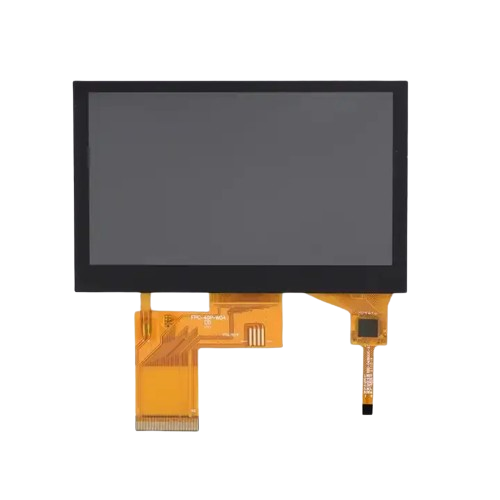Views: 254 Author: Vickey Publish Time: 2024-04-08 Origin: Site









In the realm of display technology, high brightness LCD displays have become increasingly prevalent due to their ability to deliver vivid and clear images even in brightly lit environments. From outdoor signage to automotive displays, the demand for displays with high brightness levels continues to grow. But how exactly do manufacturers achieve such high levels of brightness in LCD displays? In this article, we will delve into the techniques and technologies employed by manufacturers to achieve the impressive brightness levels in LCD displays, with a focus on the advancements in high brightness display technology and touch panel integration.
High brightness LCD displays, also known as high bright displays, are characterized by their ability to produce intense and vibrant images, making them suitable for a wide range of applications, including outdoor signage, digital advertising, and industrial displays. Unlike traditional LCD displays, which may struggle to maintain visibility in bright ambient light, high brightness displays are designed to deliver optimal performance even in challenging lighting conditions.
One of the primary methods used by manufacturers to achieve high brightness levels in LCD displays is through advanced backlighting systems. Traditional LCD displays typically use cold cathode fluorescent lamps (CCFLs) as the backlight source, which have limited brightness capabilities. However, modern high brightness displays utilize light-emitting diodes (LEDs) as the backlight source, offering significantly higher brightness levels and improved energy efficiency.
LED backlighting systems can be further enhanced through techniques such as local dimming and quantum dot technology. Local dimming allows for precise control over the brightness of individual LED zones, resulting in deeper blacks and higher contrast ratios. Quantum dot technology, on the other hand, utilizes semiconductor nanocrystals to convert blue LED light into highly saturated colors, resulting in a wider color gamut and increased brightness.
In addition to advanced backlighting systems, manufacturers employ various optical films and reflective layers to enhance the brightness and efficiency of LCD displays. These films and layers are strategically positioned within the display stack to optimize light transmission and minimize light loss.
One common technique is the use of diffuser films, which scatter light evenly across the display panel to eliminate hotspots and enhance brightness uniformity. Reflective layers, such as polarizing films and mirrors, are also used to redirect and recycle light within the display, maximizing overall brightness output.

Another critical factor in achieving high brightness levels in LCD displays is the selection of high transmittance LCD panels. High transmittance panels are designed to allow more light to pass through the display stack, resulting in brighter and more vibrant images.
Manufacturers achieve high transmittance by optimizing the design and materials of the LCD panels, including the use of low-absorption materials and anti-reflective coatings. Additionally, advancements in liquid crystal alignment techniques, such as in-plane switching (IPS) and vertical alignment (VA), help improve light transmission and reduce light scattering within the display panel.
With the increased brightness levels generated by modern high brightness LCD displays, efficient heat dissipation is essential to ensure optimal performance and longevity. Manufacturers employ various thermal management techniques, such as heat sinks, thermal pads, and ventilation systems, to dissipate heat generated by the backlighting system and electronic components.
By effectively dissipating heat, manufacturers can prevent thermal-induced degradation of display components and maintain consistent brightness levels over extended periods of operation.
In addition to achieving high brightness levels, manufacturers also focus on integrating touch panel technology seamlessly into high brightness LCD displays. Touch panels, commonly used in interactive displays and kiosks, enable users to interact directly with the display using touch gestures and input.
To maintain optimal brightness and clarity while integrating touch panels, manufacturers utilize specialized coatings and materials that minimize reflection and glare. Capacitive touch panels, which rely on the conductive properties of the user's touch, are often preferred for their high sensitivity and durability.
In conclusion, manufacturers employ a combination of advanced techniques and technologies to achieve high brightness levels in LCD displays. From advanced backlighting systems and optical films to high transmittance LCD panels and efficient heat dissipation mechanisms, each element plays a crucial role in enhancing brightness, clarity, and overall performance.
As the demand for high brightness displays continues to grow across various industries, manufacturers will continue to innovate and refine their processes to push the boundaries of display technology. By leveraging advancements in both high brightness display technology and touch panel integration, manufacturers can deliver immersive and engaging visual experiences that captivate audiences and meet the demands of today's dynamic digital landscape.
Boosting Urban Mobility: Making Public Transport the Go-To Choice in Your City
How Do You Troubleshoot Common Issues with MIPI LCD Displays?
What Are the Key Technical Specifications to Consider When Selecting a MIPI LCD Display?
What Are the Pros and Cons of Using LCD Displays for Gaming?
What Are the Environmental Impacts of Manufacturing LCD Displays?
How Does the Viewing Angle Affect the Quality of LCD Displays?